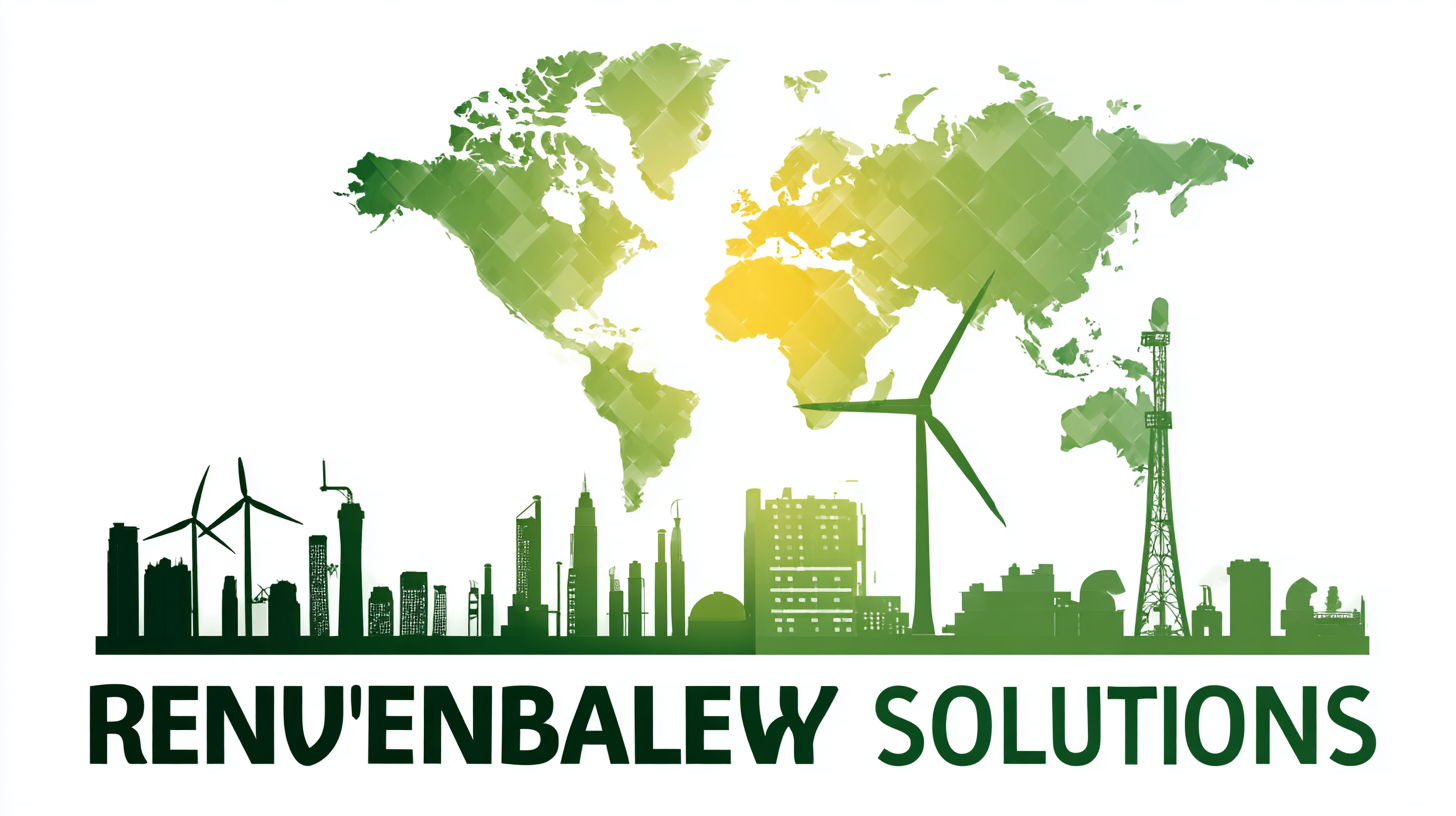In today's rapidly evolving global economy, the integration of Renewable Energy Solutions into supply chains has become not just a sustainable choice but a strategic imperative. According to the International Renewable Energy Agency (IRENA), renewable energy now accounts for nearly 29% of global electricity generation, a figure that continues to rise as businesses seek to minimize their carbon footprints and enhance efficiency. Furthermore, a report by the Carbon Disclosure Project reveals that companies leveraging renewable energy solutions can reduce operational costs by up to 30% over time, making them not only environmentally responsible but also financially astute. As industries face increasing pressure from consumers and regulators to adopt cleaner practices, understanding how to effectively select and implement these renewable solutions can significantly bolster supply chain efficiency while fostering resilience in an uncertain market landscape.

Selecting the right renewable energy solutions
for global supply chains involves several critical factors that can significantly affect
efficiency and sustainability.
First and foremost, it's essential to evaluate the
geographic location
of supply chain operations. Different regions offer varying degrees of renewable energy
availability, from solar and wind to hydroelectric power.
Assessing the local infrastructure for renewable energy integration can help determine
the best options. For instance, areas with abundant sunlight may find solar solutions
more effective, while regions with robust wind patterns might benefit from wind energy
installations.
Another key factor is the scalability of the energy solution.
It is important to consider whether the renewable energy options can adapt to the evolving
needs of the supply chain. A modular approach to energy solutions can facilitate growth and
flexibility, allowing companies to expand their renewable capacity as demand changes.
Additionally, organizations should evaluate the cost-effectiveness
of renewable energy investments, not just in initial setup but also in long-term operational
savings and environmental impact. By carefully considering these factors, companies can
select renewable energy solutions that not only enhance supply chain efficiency but also
contribute to their overall sustainability goals.
When evaluating renewable energy options for enhancing global supply chain efficiency, it’s essential to consider various sources such as solar, wind, and biomass. Each option comes with its own set of advantages and challenges that can significantly impact your operation.
Tip: Start by analyzing your current energy consumption and patterns. This will help identify which renewable energy source aligns best with your needs. For instance, if your facilities are located in an area with abundant sunlight, solar energy may prove to be a cost-effective solution. Conversely, if you’re situated in a windy region, investing in wind energy could yield long-term benefits.
Furthermore, explore the potential of biomass as a source of renewable energy. Biomass can be particularly advantageous for companies that manage organic waste, allowing you to convert waste into energy and reduce disposal costs.
Tip: Engage with local energy consultants to evaluate the feasibility of integrating multiple renewable sources. This mixed approach can enhance resilience and provide more reliable energy supply while maximizing sustainability efforts across your supply chain.

When evaluating the economic impact of renewable energy on your supply chain, it’s crucial to consider how these solutions can enhance efficiency and reduce costs. Integrating renewable energy sources, such as solar, wind, or biomass, can lead to significant savings in energy expenses over time. By investing in these technologies, companies can mitigate the risks associated with volatile fossil fuel prices, ultimately contributing to more stable financial planning.
**Tip 1:** Conduct a comprehensive cost-benefit analysis to benchmark the current energy expenditures against potential savings from renewable energy adoption. This analysis should include not only the installation and operational costs but also potential tax incentives and long-term benefits.
Transitioning to renewable energy can also strengthen your brand's reputation. Customers are increasingly making purchasing decisions based on a company’s environmental practices. By showcasing a commitment to sustainability through renewable energy initiatives, businesses can attract eco-conscious consumers while differentiating themselves in a competitive market.
**Tip 2:** Engage your stakeholders in discussions about sustainability goals. This collaboration can foster innovative ideas and solutions, enhancing your supply chain's resilience and attractiveness to investors who prioritize socially responsible practices.

Integrating renewable energy solutions into existing supply chain operations is essential for companies aiming to enhance their sustainability and operational efficiency. The shift towards renewable energy not only helps in reducing carbon footprints but also drives down energy costs in the long run. To effectively integrate these solutions, businesses can begin by assessing their current energy usage patterns. Identifying the highest energy-consuming areas allows companies to target renewable energy implementations where they will have the most significant impact.
Collaborating with renewable energy providers and utilizing energy storage technologies can further streamline this integration. For instance, companies can explore options such as solar panels or wind turbines, which can be incorporated into warehouses and distribution centers. Additionally, deploying energy management systems can help optimize energy consumption, ensuring that renewable sources are utilized effectively during peak operational times. By creating a cohesive strategy that aligns with their supply chain operations, businesses can achieve enhanced efficiency and sustainability while positioning themselves as leaders in the green economy.
| Renewable Energy Source | Expected Energy Output (kWh/Year) | Cost of Implementation ($) | Reduction in Carbon Emissions (tons/year) | Payback Period (Years) |
|---|---|---|---|---|
| Solar Energy | 150,000 | 120,000 | 90 | 8 |
| Wind Energy | 300,000 | 150,000 | 220 | 10 |
| Hydropower | 500,000 | 200,000 | 350 | 12 |
| Biomass Energy | 200,000 | 100,000 | 150 | 7 |
| Geothermal Energy | 250,000 | 180,000 | 300 | 9 |
Measuring and optimizing the efficiency of renewable energy implementations is crucial for enhancing global supply chain sustainability. Recent data from the International Renewable Energy Agency (IRENA) indicate that renewable energy sources can reduce supply chain emissions by up to 70% when effectively integrated. To achieve this, companies must assess their current energy consumption patterns and identify where renewables can play a significant role in offsetting their carbon footprint.
Optimization strategies encompass a variety of approaches, such as energy storage solutions and smart grid technology. According to a report by the International Energy Agency (IEA), the deployment of energy storage systems can enhance the efficiency of renewable energy utilization by 30% or more, facilitating a smoother integration with existing energy frameworks. Furthermore, leveraging data analytics to monitor energy usage and pinpoint inefficiencies can drive continuous improvement, leading to reduced operational costs and increased productivity. As organizations strive for resilience in their supply chains, these measures not only contribute to environmental goals but also strengthen their competitive edge in a rapidly evolving market landscape.
This chart illustrates the efficiency improvements observed by implementing various renewable energy solutions in a global supply chain. The data reflects the percentage increase in efficiency for solar, wind, and hydro energy implementations over the past year.